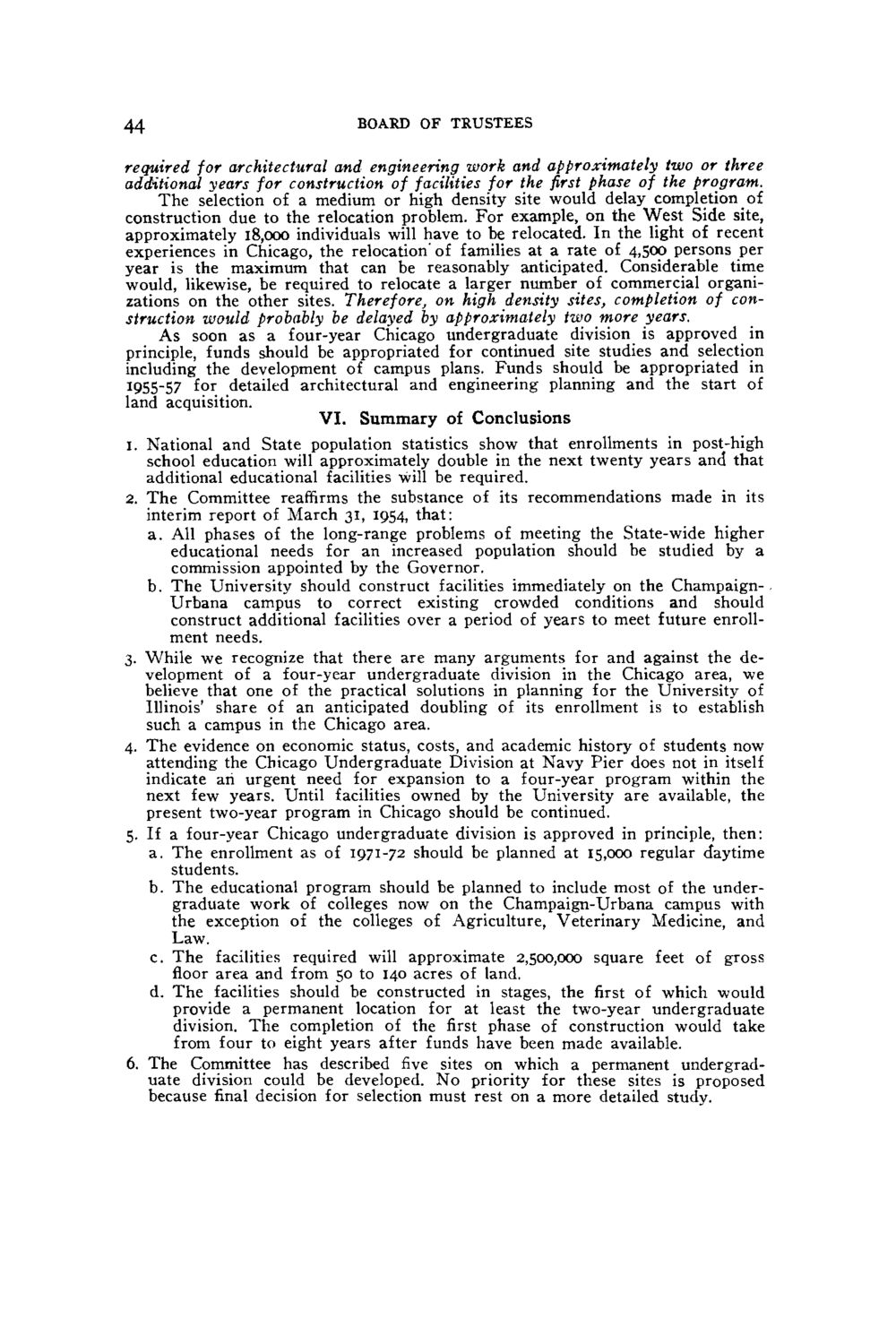| |
| |
Caption: Board of Trustees Minutes - 1956
This is a reduced-resolution page image for fast online browsing.

EXTRACTED TEXT FROM PAGE:
44 BOARD OF TRUSTEES required for architectural and engineering work and approximately two or three additional years for construction of facilities for the first phase of the program. The selection of a medium or high density site would delay completion of construction due to the relocation problem. For example, on the West Side site, approximately 18,000 individuals will have to be relocated. In the light of recent experiences in Chicago, the relocation' of families at a rate of 4,500 persons per year is the maximum that can be reasonably anticipated. Considerable time would, likewise, be required to relocate a larger number of commercial organizations on the other sites. Therefore, on high density sites, completion of construction would probably be delayed by approximately two more years. As soon as a four-year Chicago undergraduate division is approved in principle, funds should be appropriated for continued site studies and selection including the development of campus plans. Funds should be appropriated in 1955-57 for detailed architectural and engineering planning and the start of land acquisition. V I . Summary of Conclusions 1. National and State population statistics show that enrollments in post-high school education will approximately double in the next twenty years and that additional educational facilities will be required. 2. The Committee reaffirms the substance of its recommendations made in its interim report of March 31, 1954, that: a. All phases of the long-range problems of meeting the State-wide higher educational needs for an increased population should be studied by a commission appointed by the Governor. b. The University should construct facilities immediately on the ChampaignUrbana campus to correct existing crowded conditions and should construct additional facilities over a period of years to meet future enrollment needs. 3. While we recognize that there are many arguments for and against the development of a four-year undergraduate division in the Chicago area, we believe that one of the practical solutions in planning for the University of Illinois' share of an anticipated doubling of its enrollment is to establish such a campus in the Chicago area. 4. The evidence on economic status, costs, and academic history of students now attending the Chicago Undergraduate Division at Navy Pier does not in itself indicate an urgent need for expansion to a four-year program within the next few years. Until facilities owned by the University are available, the present two-year program in Chicago should be continued. 5. If a four-year Chicago undergraduate division is approved in principle, then: a. The enrollment as of 1971-72 should be planned at 15,000 regular daytime students. b. The educational program should be planned to include most of the undergraduate work of colleges now on the Champaign-Urbana campus with the exception of the colleges of Agriculture, Veterinary Medicine, and Law. c. The facilities required will approximate 2,500,000 square feet of gross floor area and from 50 to 140 acres of land. d. The facilities should be constructed in stages, the first of which would provide a permanent location for at least the two-year undergraduate division. The completion of the first phase of construction would take from four to eight years after funds have been made available. 6. The Committee has described five sites on which a permanent undergraduate division could be developed. No priority for these sites is proposed because final decision for selection must rest on a more detailed study.
| |